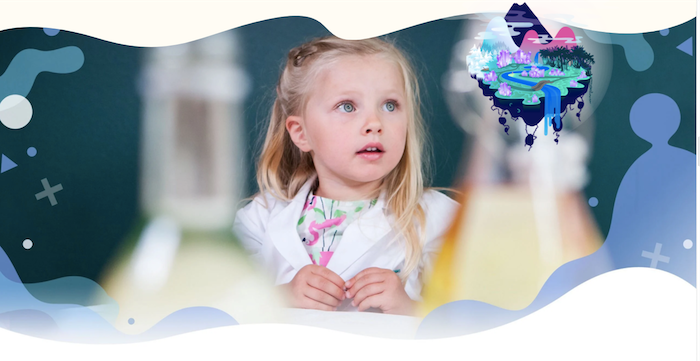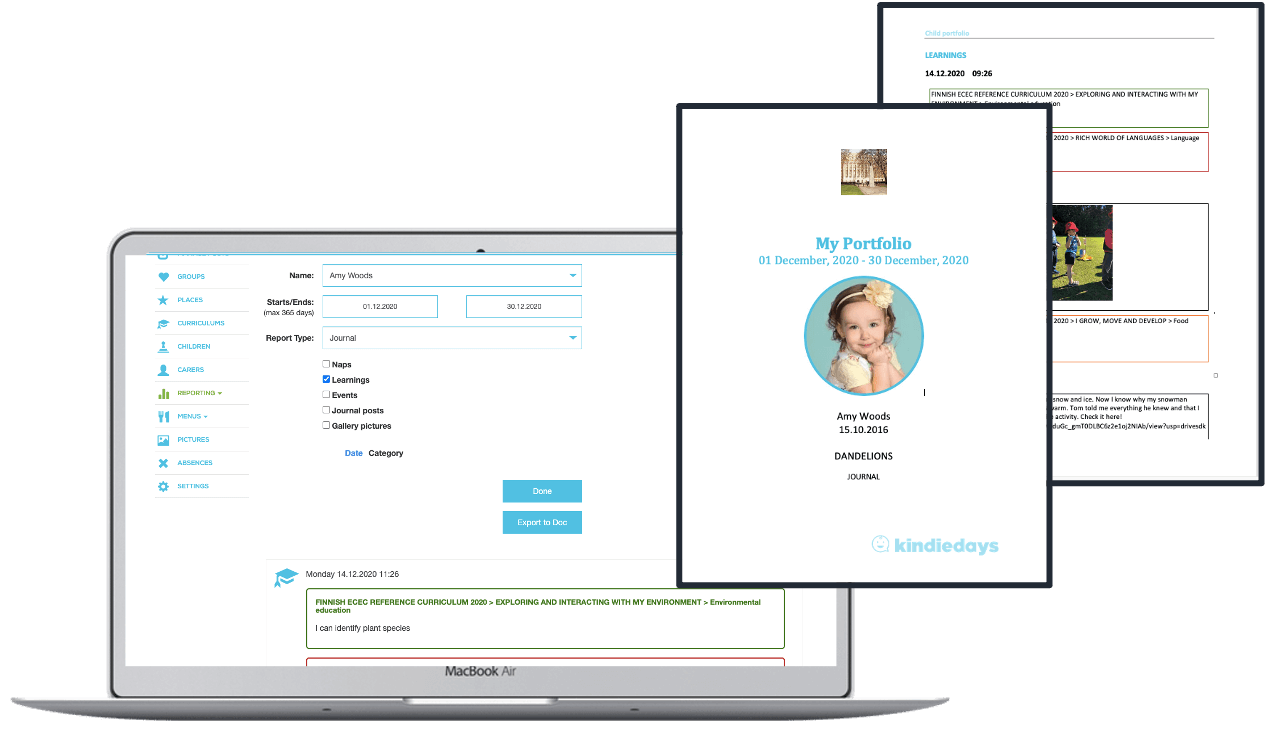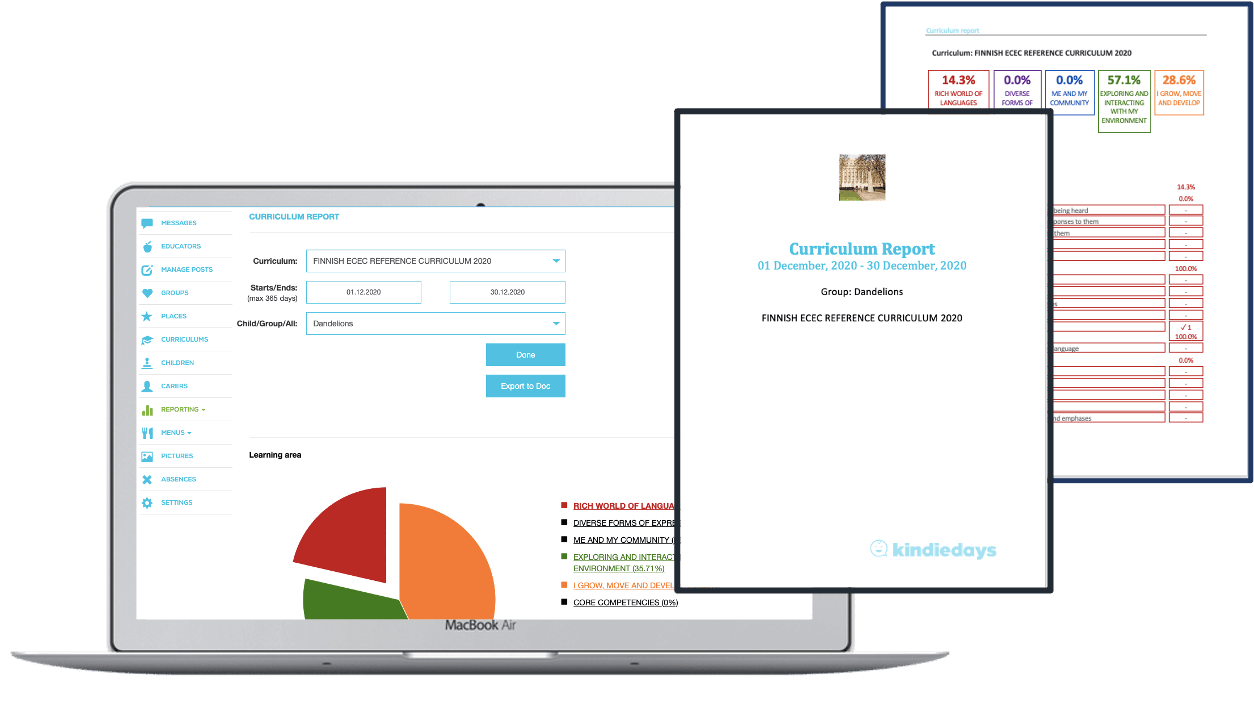Early years are very important in terms of child’s holistic development, growth, learning and future. Therefore, it truly matters how you and your team care for the children, as well as what kind of learning opportunities and environments you offer them.
Now it is good time to assess which areas and processes in your working environment might need some updating.
Follow these 10 tips, so that children improve their learning, educators feel happy & confident about their work and manager can be truly proud!
Refresh your knowledge about ECEC
People working with children need to have a profound understanding of childhood as early years are the foundation for later life. When was the last time you read a book or study related to ECEC?
New studies and research are produced constantly, so it is recommendable for everyone to stay up to date. If you feel like you need to refresh some parts of your basic knowledge about early childhood education and child development, do it.
Lifelong learning is the new black!
Define your pedagogy
Having a well thought pedagogy improves the quality of teaching. Pedagogy in ECEC is involved in everyday actions that becomes alive in different situations during the day and in communication between staff and children. Pedagogy is tied in individual educator’s, as well as the whole staff’s work.
Some of the most important corner stones of pedagogy are:
- Knowledge about ECEC
- Creating diverse and adaptable learning environments
- Sensitive interaction and ability to take children’s opinions and ideas into account
Pedagogical activities are meant to be goal-oriented, but you should remember to be open for changes in your plans.
Child is the center of pedagogical activities and skilful educator can modify teaching accordingly if the plans change. When you pay attention to the way you teach, you also learn important things from the children and how they learn.
Think of your own prejudices, views and opinions about children and ECEC and ponder do they have an affect on your working methods (subconsciously)? What are your pedagogical corner stones?
Invest in your staff
In a child care center you need trustworthy, educated and caring staff around the children. Good and dedicated staff keeps your center going and an inspiring team spirit leads you forward. Children and families sense your good drive, so it is worth investing in.
According to the National Core Curriculum for Early Childhood Education and Care in Finland, the educators’ goal-oriented and systematic self-assessment is essential for maintaining and developing the quality of early childhood education and care.
Is your staff assessing their teaching and professional development regularly? Have you set professional development objectives for your staff? How are these objectives followed on a personal and center’s management level?
Keep staff meetings regularly and make sure everyone gets to participate.
Every now and then, chat with your staff members one by one and ask for example:
- What are their professional dreams and goals?
- How would they like to develop their professional skills?
- What are their strengths?
By discussing about professional development, you motivate your staff to perform better at work. You can also suggest your staff to keep notes of their teaching and see, what truly are their strengths and weaknesses, and assess those in the next meeting.
Download Kindiedays' Staff Appraisals template →
Check your center’s curriculum
Every child care center needs guidelines about how to work and guarantee children the best learning possibilities and developmental opportunities possible. Probably, you have a national curriculum to follow and also your kindergarten’s local curriculum – that’s great!
The curriculums and plans include good practices and approaches to teaching, which make ECEC in everyday work successful and goal-oriented. Update your center’s curriculum once a year together with your staff. Modern curriculums can be demanding and following children’s learning challenging.
Your curriculum should have answers for example to these questions:
- What are your centre’s values, principles, goals and areas of learning?
- How is your curriculum used in the center?
- What kind of possibilities are the children getting to participate in pedagogical activities?
Create child’s individual curriculum
It is meaningful to have individual learning plans where each child’s strengths, needs and interests are listed on.
The plan guides the child’s learning and the educators’ planning. The plan helps to find ways to promote each child’s individual development, learning and wellbeing.
The ECEC plan consists of the staff’s, child’s and the family’s observations and views about:
- Child’s wellbeing
- Child’s development
- Child’s learning
- Child’s interaction in a group
A new ECEC plan is drawn up once a year. When assessing the previous plan, think of how did the planned activities, arrangements, learning environments and pedagogy support the child’s learning?
Download Kindiedays’ Individual Child Curriculum template →

.png)

.png)
.png)
.png)

.png)

